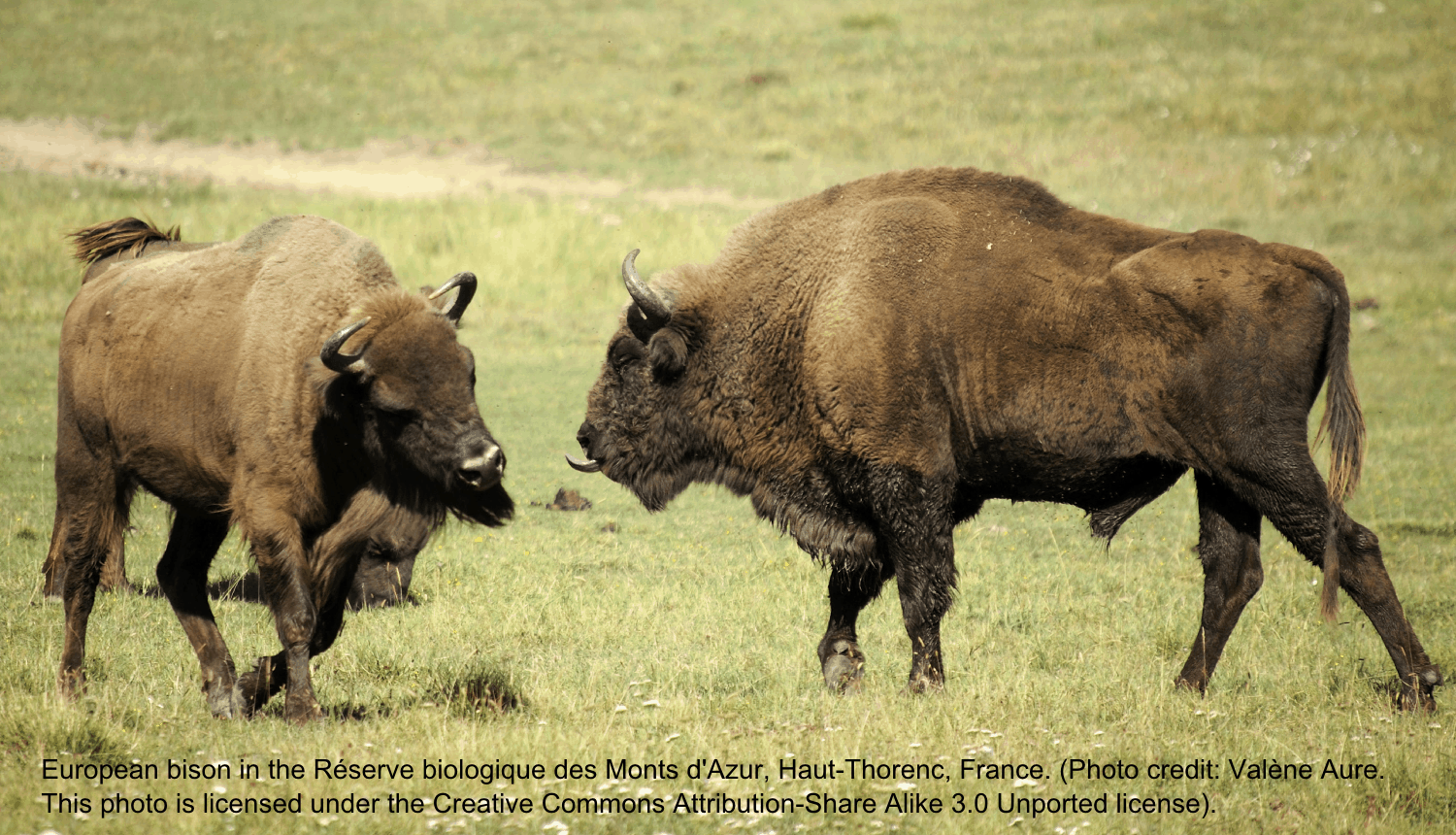
Species
Private land and imperiled species
Principal Biologist(s)
Mike Phillips
Project Location
Western United States
Conservation Problem
Relative lack of involvement by private landowners in efforts to recover imperiled species has left the European Bison vulnerable.
Conservation Status
- Species listing: Vulnerable (IUCN)
- Lowland line subspecies (B. b. bonasus) listing: Vulnerable (IUCN)
- Lowland-Caucasian line subspecies (B. b. bonasus × B. b. caucasicus): Endangered (IUCN)
TESF Involvement:
Involved from 2008-2012
Principal investigators, Dr. Wanda Olech and Dr. Taras Sipko, received funding from the Turner Foundation to implement a 5-year program on behalf of European bison to improve the conservation status of the species. TESF was involved in the decision making process for funding this project as well as for reviewing the science and assessing the results of this program.
Project Goals & Objectives
The goals of this project were to (A) improve the conservation status of bison in the Carpathian Mountains region of Eastern Europe, and (B) to support the establishment of a free-ranging bison group in the Vologda region of Russia. To this end, between 2008 and 2012, Turner Foundation funds were used for the following objectives:
OBJECTIVE A1. Transfer European bison from Western European captive facilities to the Carpathian region to enrich genetic diversity in this area.
Details:
- a) Transfer 20 – 25 animals to captive breeding facilities at Vanatori Neamt National Park, Romania.
- b) Transfer 10 – 14 animals to Skolivski Beskydy National park, Ukraine.
- c) Transfer 5 – 8 animals to Bieszczady, Poland.
- d) Transfer 5 – 8 animals to Poloniny National Park, Slovakia.
OBJECTIVE A2. Develop a European bison advisory center at Warsaw Agricultural University to provide an up-to-date and accessible repository of bison pedigree data.
OBJECTIVE A3. Collect and analyze genetic samples from captive and free-ranging European bison herds.
OBJECTIVE B1. Transfer bison from breeding centers near Moscow to the Ust’-Kubenskoe Forest Reserve (U-KHF) in the Vologda Region of the Russian Federation. This is intended to establish a second free-ranging herd.
Details:
Transfer 50 animals to U-KHF
i. Expected transfer of 10 – 12 animals/year
OBJECTIVE B2. Collect and analyze genetic samples from captive and free-ranging European bison herds.
Project Background
The European bison (Bison bonasus) species – which used to comprise a lowland subspecies (B. b. bonasus) and a Caucasian subspecies (B. b. caucasicus) – historically ranged from western to central and southeastern Europe. The last two free-ranging populations were extirpated early in the 20th century, and efforts were made in the 1920s to reconstruct the species from 54 animals that were surviving in zoos and private collections. These captive animals were derived from a captive population of just 12 founding animals. In 1952, bison from captive stock were reintroduced to areas of what are now Bialowieza National Park, Poland, and the adjacent Belovezhskaya National Park, Belarus. Currently, these locations support the largest free-ranging populations of European bison.
During restoration efforts, the two subspecies were interbred resulting in two genetic types: (1) the lowland line (L-line) and (2) the lowland-Caucasian line (LC-line) which is a cross between the natural lowland and Caucasian subspecies. The Bialowieza – Belovezhskaya park complex supports free-ranging populations of the L-line while the LC-line is more geographically extensive, ranging in the Carpathian Mountains of Poland, Slovakia and Ukraine as well as in the Russian Federation. An isolated population of the LC-line was hybridized with North American plains bison (B. bison) and have a wild distribution in the Caucuses region of the Russian Federation. In addition to these free-ranging herds, captive European bison are held in a number zoos and parks throughout Western Europe.
In May 2005, Dr. Wanda Olech (Chair of the European Bison Specialist Group) presented European bison conservation needs at a meeting of the IUCN North American Bison Specialists Group at the Vermejo Park Ranch, New Mexico.
Turner Foundation (TFI) funding allowed the collection and analysis of a substantial amount of genetic material from captive and free-ranging herds across Europe and Russia. As such the European bison conservation effort has a comprehensive genetic database from which to draw to inform preferential breeding activities and optimal reintroduction strategies. TFI funding also made possible the physical transport of a total of 70 animals to areas in the Carpathians and Russia where efforts to build viable populations of free-ranging bison are underway. Crucially, TFI funding helped facilitate the establishment of the EBCC/EBAC, providing the organizational, planning, fundraising, and regulatory capacity to sustain itself for the future in the absence of further Turner support.
